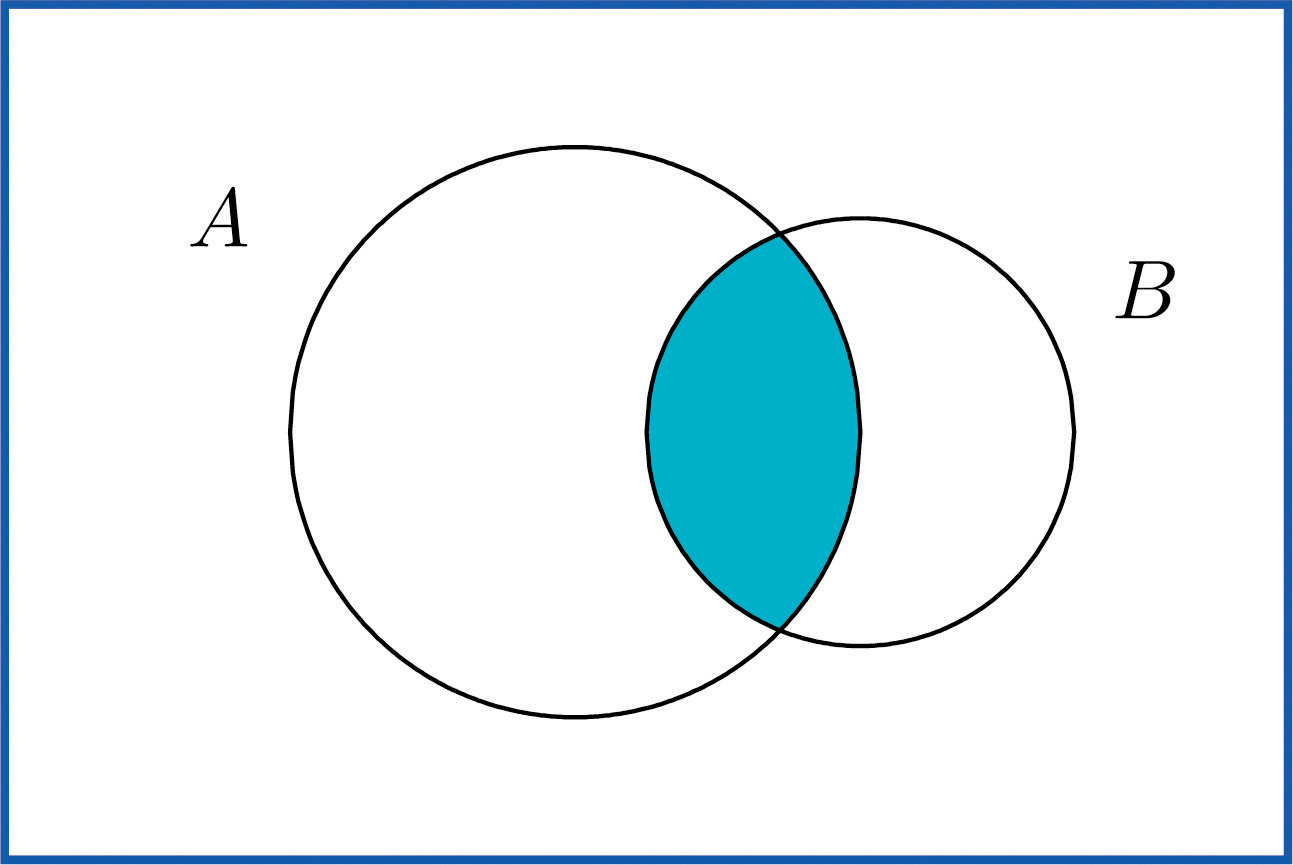Probability: Complements, Intersections, Unions, Conditional
Objectives
- To learn how some events are naturally expressible in terms of other events.
- To learn how to use special formulas for the probability of an event that is expressed in terms of one or more other events.
Probability Rule for Complements
P(A^c)=1−P(A)
The complement of an event A in a sample space S, denoted A^c, is the collection of all outcomes in S that are not elements of the set A. It corresponds to negating any description in words of the event A.
Intersection of Events

The intersection of events A and B, denoted A ∩ B, is the collection of all outcomes that are elements of both of the sets A and B. It corresponds to combining descriptions of the two events using the word “and.”
Mutually Exclusive Events
Events A and B are mutually exclusive if they have no elements in common.
Events A and B are mutually exclusive if and only if
P(A∩B)=0
- Any event A and its complement A^c are mutually exclusive
- but A and B can be mutually exclusive without being complements.
Union of Events

The union of events A and B, denoted A ∪ B, is the collection of all outcomes that are elements of one or the other of the sets A and B, or of both of them. It corresponds to combining descriptions of the two events using the word “or.”
Additive Rule of Probability
// Probability(union of A & B)
P(A∪B) = P(A) + /* all of A */
P(B) - /* all of B */
P(A∩B) /* less the intersection of A & B */
Conditional Probability
In general, the revised probability that an event A has occurred, taking into account the additional information that another event B has definitely occurred on this trial of the experiment, is called the conditional probability of A given B and is denoted by P(A|B)
//
// the conditional probability of A given B
//
// ex. A = odds of rolling a 5 (1/6)
// B = an odd number has been rolled (3/6)
//
P(A|B)
The conditional probability of A given B, denoted P(A|B), is the probability that event A has occurred in a trial of a random experiment for which it is known that event B has definitely occurred. It may be computed by means of the following formula:
P(A|B)= P(A∩B) / /* intersecton of A & B */
P(B) /* divide by the probability of B */
//
// A = rolling a 5, (5)
// B = rolling an odd (1, 3, 5)
//
// P(A|B) = what are the odds of rolling a 5 given rolling an odd?
//
// P(A∩B) = (5) ∩ (1, 3, 5) = (5), p(5) = P(A∩B) = 1/6
// P(B) = (1, 3, 5) = 3/6
//
// P(A|B) = P(A∩B) 1/6 /
// P(B) 1/2
//
// -> 1/3
//
Independent Events
Events A and B are independent if
P(A∩B)= P(A)·P(B)
//
// A single fair die is rolled.
// Let A={3} and B={1,3,5}. Are A and B independent?
//
// P(A)=1∕6, P(B)=1∕2
//
// P(A∩B)=P({3})=1∕6
//
// P(A)·P(B)=(1∕6)(1∕2)=1∕12
//
// P(A∩B) != P(A)·P(B)
// 1/6 != 1/12
//
// -> not independent
//
The concept of independence applies to any number of events. For example, three events A, B, and C are independent if P(A∩B∩C)=P(A)·P(B)·P(C).
Probabilities on Tree Diagrams
Some probability problems are made much simpler when approached using a tree diagram. The next example illustrates how to place probabilities on a tree diagram and use it to solve a problem.